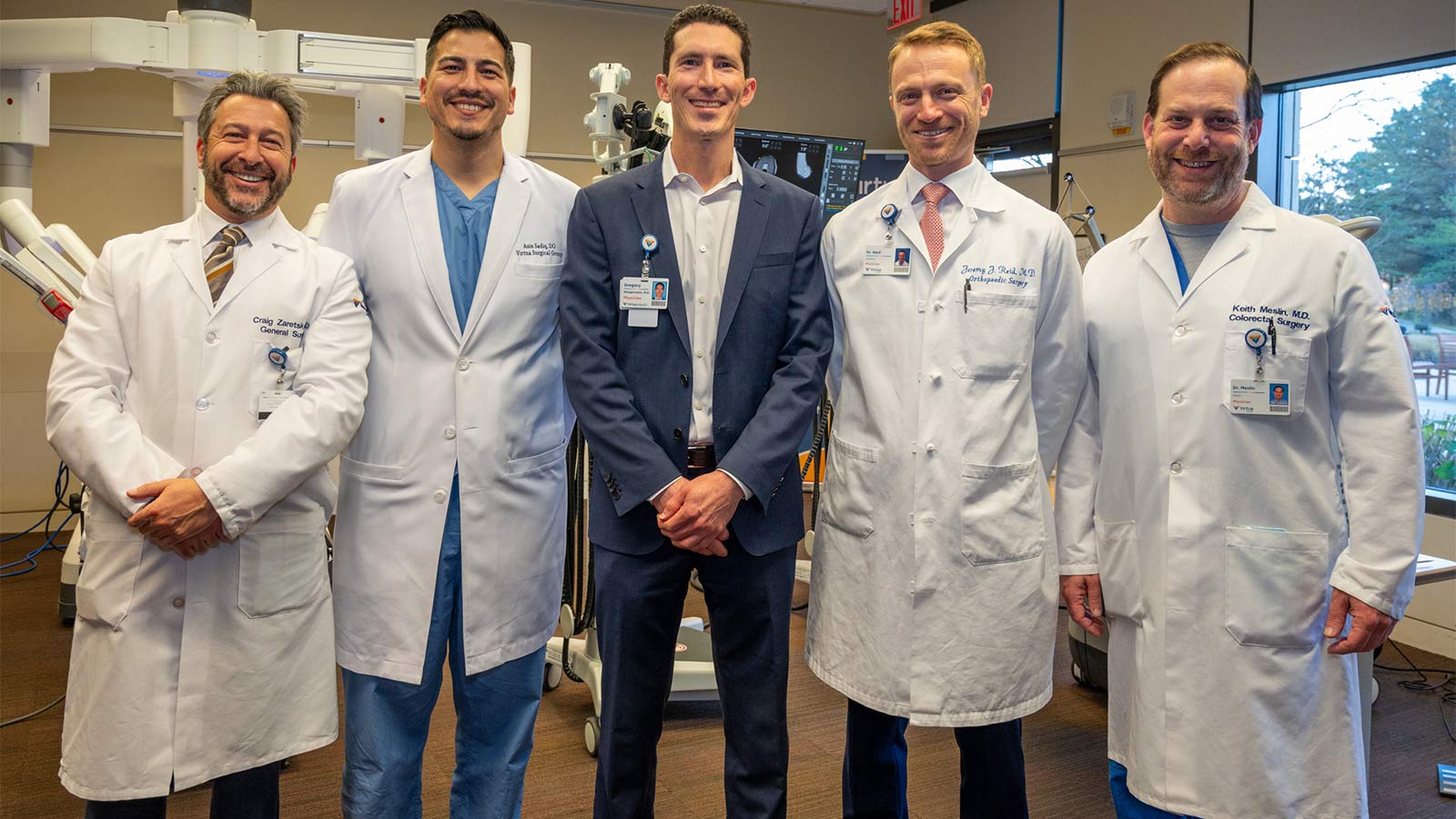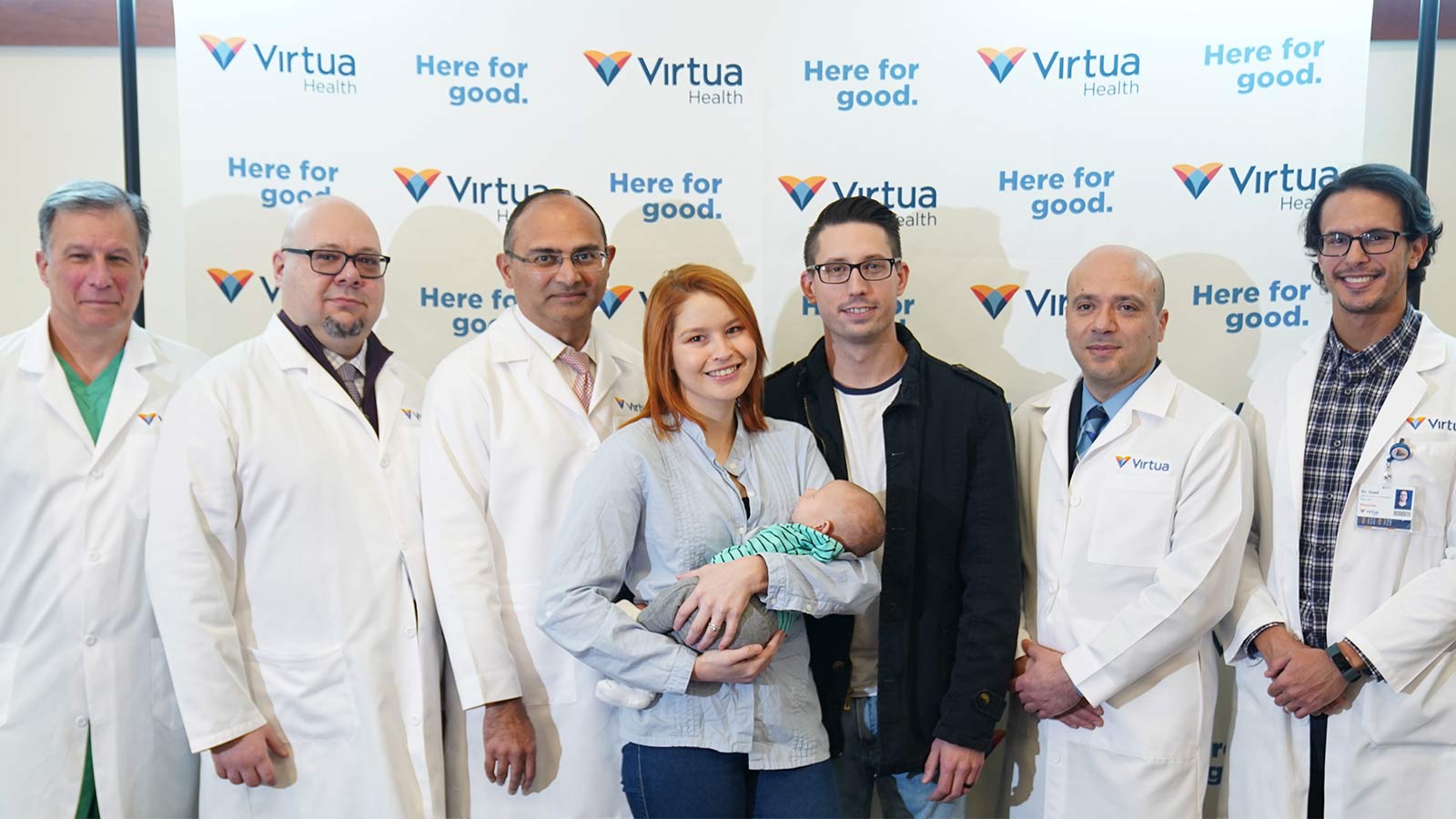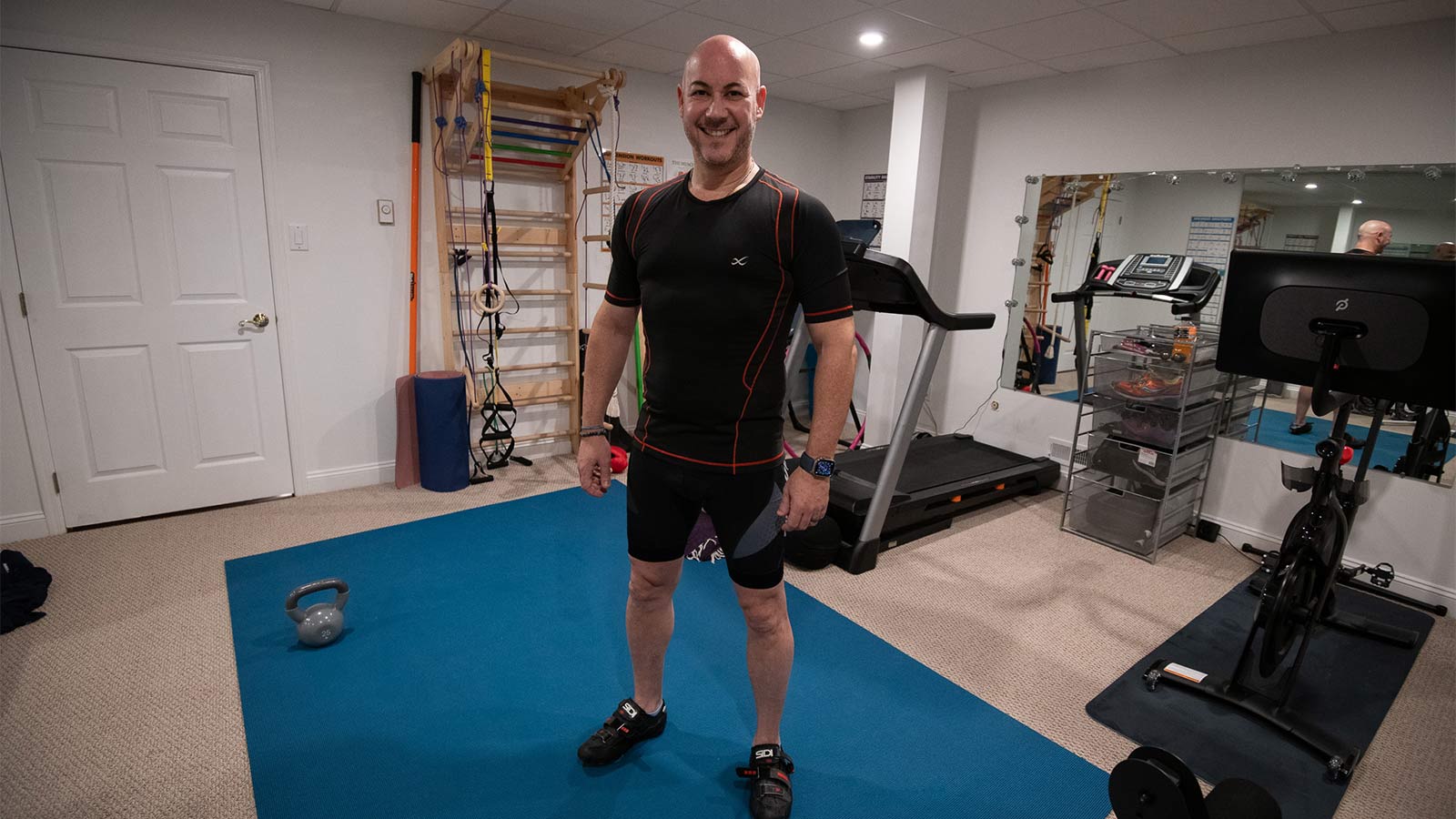When You Need A Hysterectomy, Know Your Options
If you need a hysterectomy to stop heavy bleeding and pelvic pain, Virtua minimally invasive GYN surgeons offer many options to help you recover quickly, with less pain and few complications.

By Geoffrey Bowers, MD, Virtua Gynecologist/Robotic Surgeon, Virtua Minimally Invasive Gynecologic Surgery
Pelvic pain and heavy bleeding can be incredibly challenging for many women, often leading them to consider a hysterectomy or the surgical removal of the uterus. Approximately one in three women in the U.S. opts for this procedure before turning 60.
If a hysterectomy is your best treatment choice, there are multiple options to consider. Knowing whether you need a partial hysterectomy (removing just the uterus), total hysterectomy (removing the uterus and cervix), or a hysterectomy with removal of the ovaries, will help you make an informed decision. Additionally, newer, minimally invasive techniques and robotic-assisted surgeries can lead to faster recovery times compared to traditional surgery.
Hysterectomy options tailored to you
When discussing your surgical options, your doctor will consider various factors, including your specific medical condition, the size and shape of your uterus, pelvic anatomy, body type, and any prior surgeries. This personalized approach ensures you'll receive recommendations that suit your lifestyle and unique needs. Here’s a closer look at the different types of hysterectomy procedures available:
- Open abdominal surgery: This involves removing the pelvic organs through a 6- to 12-inch abdominal incision.
- Vaginal hysterectomy: This technique removes the organs through the vagina without any external incisions. It’s often used for benign (non-cancerous) conditions and is suitable when the uterus is of average size and in cases of pelvic prolapse.
- Laparoscopic hysterectomy: This minimally invasive method uses instruments inserted through three to five small incisions in the abdomen. A small scope (camera) is inserted through one of the incisions, offering a two-dimensional view of the pelvic area.
- Robotic hysterectomy: This advanced minimally invasive approach is usually performed through one or more small incisions. During this procedure, the surgeon operates from a console a few feet away from the patient, controlling the movement of three to four robotic arms. The robotic instruments are designed to mimic the surgeon’s wrist movements, and a high-resolution camera provides a magnified three-dimensional view of the abdomen. This approach to hysterectomy gives the surgeon excellent precision and control, resulting in less pain for the patient, fewer complications, and a quicker recovery. Most patients can expect to spend only one night in the hospital, and many return to their normal activities within three to five days.
When you need a hysterectomy to relieve pain and heavy bleeding, it helps to know you have options and a voice in your treatment plan.
Find symptom relief with a Virtua minimally invasive GYN surgeon
Virtua’s minimally invasive GYN surgeons offer innovative surgical solutions that help you return to your life and activities with minimal downtime. To schedule an appointment with a Virtua minimally invasive GYN surgeon, call 888-847-8823.
There's So Much More to Explore
Discover expert insights, inspiring stories, health tips, and more by exploring the content below!

5 Feel-Good Activities to Explore Around South Jersey

Stress Incontinence vs. Urge Incontinence: What's the Difference?
Tips to Support Your Childs Mental Health
5 Key Facts About Proton Therapy for Cancer Treatment

HeartTalk Magazine
3 Changes You Can Make Today to Lower Your Cancer Risk
A Lung Cancer Screening Could Save Your Life

Mood Swings vs. Mood Disorders: Know the Signs and Get Help
Are emotional ups and downs disrupting daily life? Learn common signs of mood disorders, and when to talk to a doctor about diagnosis and treatment options.
Take Pride in our Health: Must Dos for LGBTQ+ Preventative Care

4 Foolproof Pelvic Floor Strengthening Exercises for Women

What to Expect During Perimenopause

Protect Yourself From Tick Bites and Lyme Disease

Groundbreaking Renal Denervation Procedure Controls a Lifetime of High Blood Pressure

Patient Story: LVAD Mechanical Pump Strengthens Michael's Heart Function

5 Light and Healthy Recipes Perfect for Spring

10 Quick Ways to De-Stress

Rock On! Jersey Musician Frank Sings the Praises of His New Lung Valves

4 Ways to Stay Fit and Healthy on a Budget

6 Tips to Tame Your Spring Allergies

Do You Know the Signs and Symptoms of Uterine Fibroids?

How Are Uterine Fibroids Treated?

Can I Have Sex After a Hysterectomy?

Mitral Valve Surgery Keeps Yaneth Living the American Dream

From Restless to Restful: How Movement Improves Sleep

5 Simple Ways to Spring Clean Your Wellness Routine

What to Expect From a Robotic Hysterectomy

When You Need A Hysterectomy Know Your Options

9 Essential Reasons to Vaccinate Your Children

Take Control of Incontinence, Prolapse, and Other Pelvic Floor Disorders

How Can I Prevent Bone Loss and Osteoporosis?

How Do You Manage the Side Effects of Weight-Loss Medications?

Which Weight-Loss Option is Best for Me?

The Truth About Menopause, Weight Gain, and Belly Fat

Shedding Light on Lesser-Known Menopause Symptoms and Solutions

Debunking The Myths About Vaginal Dryness

Advanced Minimally Invasive GYN Surgery Puts You at the Center of Care

Your 10-Point Plan to Avoid Winter Weight Gain

7 Reasons Why You Want Your Surgeon to Be an Expert in Robotics

Colitis Symptoms Under Control, Jennifer Is ‘Living My Best Life’

Be Fast and Spot the Signs of Stroke

Surprising Symptoms May Signal Stroke In Women

Robotic Hernia Surgery Combines Innovative Techniques With Faster Recovery Times

The HPV Vaccine: A Powerful Shield Against Cervical Cancer

How Does Breast Density Affect Your Mammogram?

Menopause: New Insights Into the Power of Hormone Replacement Therapy

How to Prevent and Treat Urinary Tract Infections

One New Heart Valve Saves Two Lives in the Tritten Family

6 Numbers Key to Keeping Your Heart Healthy

Lung Screening, Robotic Technologies Get Pat Kicking Up Her Boots Again

Breast Cancer Diagnosis Inspires Catherine to Help Others

Five Mindfulness Tips That Can Help Heal Your Heart

How Do I Get Rid of This Back Pain for Good?

How the Unique Stages of a Womans Heart Affect Her Health

Sarah Wins Back Her Health After Crohn's Disease Diagnosis

Put Your Mammogram Appointment on the Top of Your To-Do List

A Breast Self-Exam Saved Kristen's Life

How Sex Keeps You Healthy as You Age

Protect Your Child From HPV and Related Cancers

Why IUDs Might Be The Most Effective Birth Control

5 Things You're Too Embarrassed to Tell Your OBGYN

4 Not-So-Crazy Questions to Ask Your Doctor

What to Know About Cervical Cancer Screenings

